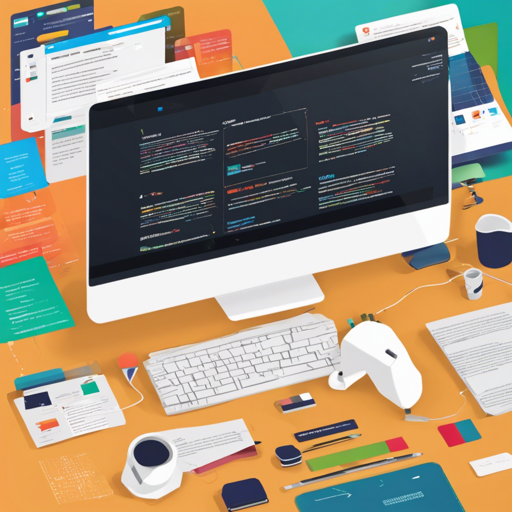In the fast-paced world of web development, creating a single-page website can be both efficient and effective. Imagine you are throwing a dinner party and your house is the website. Instead of having multiple rooms (or pages) for your guests to navigate, you can have one spacious room where all the conversations happen effortlessly, enhancing interactions and reducing confusion. Today, we’ll explore how to use a simple HTML file along with some clever CSS to create content that can be easily toggled using anchors and the :target selector!
Step-by-Step Guide to Building Your Single-Page Website
Follow these easy steps, and you’ll have your own single-page website up and running in no time!
- Create Your Basic HTML Structure
Start with a standard HTML template where you will house your content.
<!DOCTYPE html>
<html lang="en">
<head>
<meta charset="UTF-8">
<title>My Single Page Website</title>
<link rel="stylesheet" href="styles.css">
</head>
<body>
<nav>
<a href="#home">Home</a>
<a href="#contact">Contact</a>
</nav>
<section id="home">
<h1>Welcome to My Website!</h1>
<p>This is the home section of my website.</p>
</section>
<section id="contact">
<h1>Contact me!</h1>
<p>Feel free to reach out!</p>
</section>
</body>
</html>In the navigation bar, links to different sections of the page are created using the href attribute and the id of the respective sections, allowing users to jump to their chosen section seamlessly.
Each section you add should have a unique id. For example, if you want to add a contact section, you can simply declare:
<section id="contact">
<h1>Contact me!</h1>
<p>Feel free to reach out!</p>
</section>Add a CSS file to style your page. Here’s an example of a simple CSS that hides sections until they’re targeted:
* {
box-sizing: border-box;
}
nav {
background: #333;
padding: 1em;
}
nav a {
color: white;
margin: 0 10px;
text-decoration: none;
}
section {
display: none;
}
section:target {
display: block;
}Understanding the Mechanics
Think of the single-page website as a cozy café where each table represents a section of content. When you sit at a table (click on a link), the other tables are hidden from view. Similarly, the :target selector helps toggle visibility, showing only the content that is currently ‘in focus’ for the user. This way, visitors can enjoy the café’s ambiance without being distracted by other tables.
Troubleshooting Common Issues
If you’re encountering problems while building your single-page website, consider the following troubleshooting tips:
- Ensure Your IDs Are Unique: Make sure that each section has a unique id. Duplicate ids can cause conflicts in navigation.
- Check CSS for Proper Styling: If your sections aren’t displaying correctly, inspect your CSS to ensure that the :target selector and display properties are set properly.
- Inspect Browser Console for Errors: Open the console to see if there are any errors that might be hindering your navigation.
- For More Insights: For more insights, updates, or to collaborate on AI development projects, stay connected with fxis.ai.
At fxis.ai, we believe that such advancements are crucial for the future of AI, as they enable more comprehensive and effective solutions. Our team is continually exploring new methodologies to push the envelope in artificial intelligence, ensuring that our clients benefit from the latest technological innovations.
Conclusion
Creating a single-page website using just HTML and CSS is an engaging pursuit that allows you to present content in a clean, distraction-free environment. The ability to navigate through different sections with ease enhances user experience and maintains focus. So, go ahead, implement what you’ve learned, and watch your web presence grow!

